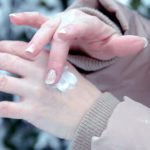 We asked Dr. Laura Ferris, dermatologist at UPMC, about the risks associated with indoor tanning. She recently published a study on the subject in the Journal of the American Academy of Dermatology.
We asked Dr. Laura Ferris, dermatologist at UPMC, about the risks associated with indoor tanning. She recently published a study on the subject in the Journal of the American Academy of Dermatology.
What are some risks associated with indoor tanning, who is at highest risk?
A. The biggest risk of tanning is developing skin cancer – tanning increases the risk of both melanoma and non-melanoma skin cancer. Other risks include wrinkles, pigment changes and skin discoloration. Skin cancer is most often found in people ages 50 and older, but results from damage done throughout a lifetime. In fact, most skin cancers are thought to be caused by ultraviolet light exposure accumulated since childhood.
Is it safe to occasionally use tanning beds?
A. No. Tanning is a carcinogen so it can never be safe. Tan skin is actually the top portion of a cell defending the nucleus of the cell, where DNA is located. Mutations in DNA from ultraviolet light cause cancer. Tan skin represents the cells’ last defense to place a barrier between ultraviolet light and DNA. Every time someone tans, their DNA is exposed to something that causes cancer.
What did your recent study find?
A. In our recent study, we analyzed the reasons why patients seek skin cancer screenings. More than 40 percent of patients reported indoor tanning use, and when we compared patients who were tanners to those who were not, we found most tanners wouldn’t normally be at risk for skin cancer if they had never used tanning beds. Additionally, our study found about 25 percent of indoor tanners reported tanning bed usage as their reason for screening, indicating they knew their habits were unhealthy. Out of the people we surveyed, patients who tanned indoors were most likely to believe that skin cancer screening has been shown to prevent skin cancer and to reduce the risk of death.
What is the safest way to tan?
A. Spray-on tans and self-tanning creams are the only safe forms of tanning. If you are out in the sun, it’s recommended to use a broad spectrum sun screen with an SPF of 30 or higher. At the beach, the best way to stay protected is to sit under a sun umbrella. Always stay away from tanning oils as they don’t provide adequate protection. Although visiting a dermatologist doesn’t make tanning safer, anyone who has a spot on their skin that they think might be skin cancer should see a board-certified dermatologist.







